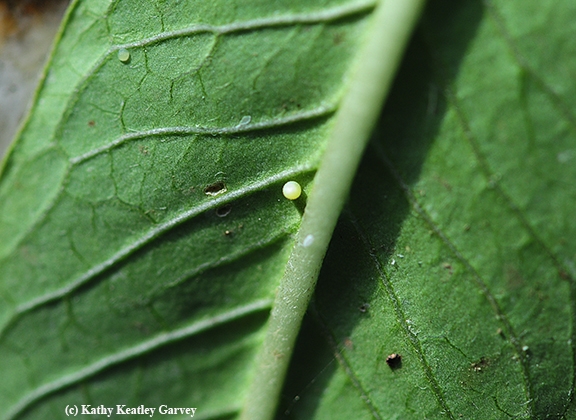So here it is Monday, Oct. 10 and the monarch butterflies are still laying eggs on our milkweed in Vacaville, Calif.
"Mrs. October" fluttered down to our tropical milkweed at 4:30 p.m. today and began laying eggs on three tropical milkweeds (Asclepias curassavica).
We grow three other species--showy milkweed, Asclepias speciosa; narrow-leafed milkweed, Asclepias fascicularis; and butterfly milkweed, Asclepias tuberosa. All are looking quite healthy, but Mrs. October chose the tropical milkweed.
As she tended to her maternal business, several migrating monarchs glided down to sip some nectar (flight fuel) from Mexican sunflower (Tithonia) and butterfly bush (Buddleja davidii) in our pollinator garden. Other monarchs seemed interested in finding partners. In October? Apparently so. Temperatures have hovered around 90 degrees for the last several days.
And here I was just telling the family, "My monarch-rearing season is almost over. I have two chrysalids left (in our indoor habitat). If monarchs eclose, that will make a total of 50 monarchs reared and released this season." (This is my small-scale conservation project to help the declining monarch population.)
Not so fast. We now have four monarch eggs, four eggs rescued from assorted predators (lady beetles, milkweed bugs, spiders, ants, and other critters looking for a tasty bit of protein. Pathogens, tachinid flies, wasps, assassin bugs and birds also "interrupt" the natural life cycle of a monarch. (See enemies of monarchs from monarchprogram.org.)
With any luck, the monarch eggs will become caterpillars, then chrysalids and then adults, thanks to Mrs. October's unexpected gift.
However, it's not good to count your chickens before they hatch...or the monarchs before they eclose.
Attached Images:

